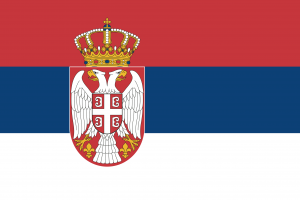Language/Serbian/Culture/Folk-Dances
 Հայերէն
Հայերէն Български език
Български език 官话
官话 官話
官話 Hrvatski jezik
Hrvatski jezik Český jazyk
Český jazyk Nederlands
Nederlands English
English Suomen kieli
Suomen kieli Français
Français Deutsch
Deutsch עברית
עברית हिन्दी
हिन्दी Magyar
Magyar Bahasa Indonesia
Bahasa Indonesia فارسی
فارسی Italiano
Italiano 日本語
日本語 Қазақ тілі
Қазақ тілі 한국어
한국어 Lietuvių kalba
Lietuvių kalba Νέα Ελληνικά
Νέα Ελληνικά Şimali Azərbaycanlılar
Şimali Azərbaycanlılar Język polski
Język polski Português
Português Limba Română
Limba Română Русский язык
Русский язык Español
Español العربية القياسية
العربية القياسية Svenska
Svenska Wikang Tagalog
Wikang Tagalog தமிழ்
தமிழ் ภาษาไทย
ภาษาไทย Türkçe
Türkçe Українська мова
Українська мова Urdu
Urdu Tiếng Việt
Tiếng ViệtAs a teacher of Serbian language for over 20 years, I am thrilled to introduce you to the vibrant world of Serbian folk dances.
Serbian traditional dances are often performed at weddings, festivals, and other cultural events. They carry a rich history and symbolism, and are an integral part of Serbian culture.
Serbian folk dances are typically performed in a circle, with participants holding hands, creating a sense of community, and building strong bonds between performers.
Consider broadening your understanding by checking out these related lessons: Cuisine & Contemporary Serbian Poetry.
Types of Serbian Folk Dances
There are many different types of Serbian folk dances, each with its unique style, costume, and music. Here are some of the most popular ones:
Kolo
Kolo is the national dance of Serbia and one of the most popular ones. Kolo is a collective term for all types of circle dances that involve a whole group of people holding hands. There are many different styles of Kolo, each with its particular steps, rhythm, and musical accompaniment.
Čoček
Čoček is a fast, lively dance originating from the Balkans. It is performed in pairs, with the dancers holding each other's belts or hands. The steps of Čoček are quick and intricate, and the dance is often accompanied by the sounds of a trumpet or other brass instruments.
Moravac
Moravac is a traditional circle dance that originated from the Morava region of Serbia. The dance is usually performed at weddings and other celebrations. Moravac has a recognizable rhythm, and the dancers clap their hands and sing along.
Šopska Sofka
Šopska Sofka is a Macedonian folk dance that is also popular in Serbia. The dance is performed by couples or groups of dancers, with the male dancer holding a handkerchief in one hand and the female dancer a tambourine. The steps of the dance are lively, and the music typically features a fast-paced melody.
Užičko Kolo
Užičko Kolo is a popular dance originating from the Užice region of Serbia. The dance features a solo male or female dancer, who performs the steps in the middle of a circle made up of other dancers. Užičko Kolo has a slow tempo and is often performed at weddings and other traditional events.
Costumes and Music
Serbian folk dances are often accompanied by traditional music played on instruments such as the accordion, violin, and tamburica. The music is usually fast-paced, with a strong rhythm that reflects the character and mood of the dance.
The costumes worn during Serbian folk dances are often colorful and decorative, featuring intricate patterns and embroidery. The costumes are usually made of wool or silk and are designed to reflect the style and tradition of the region from which the dance originates.
Conclusion
In conclusion, Serbian folk dances are a beautiful and essential part of Serbian culture. They carry centuries of tradition and history, reflecting the unique personality and character of the Serbian people. By learning and practicing these dances, students of the Serbian language will not only gain an appreciation for Serbian culture but also build connections with the community of dancers around the world.
Sources
Having concluded this lesson, consider checking out these related pages: Contemporary Serbian Art Scene & Medieval Serbian Literature.
Videos
Serbian folk dance: Sopska trojka i nadigravanje - YouTube
Serbian folk dance: Bosilegradsko krajiste - YouTube
Serbian folk dance: Šopske igre - YouTube
Other Lessons
- Football in Serbia
- Montenegro Timeline
- Contemporary Serbian Art Scene
- Contemporary Serbian Poetry
- Famous Serbian Painters
- Cuisine
- Serbian Films
- Kosovo Timeline
- Religious Festivals

